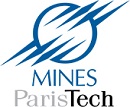About SINCERE
The SINCERE project will develop new economic modelling tools to understand the resource use patterns of China and the EU. The project will also address indicators and metrics, institutions and policies, and it will examine historical patterns between resource indicators, trade and macro-economic performance. Indeed an overall aim is to strengthen collaboration between European and Chinese researchers.
The project is part of a collaborative funding initiative by The Agence Nationale de la Recherche (ANR France), Deutsche Forschungsgemeinschaft (DFG Germany), the Economic and Social Research Council (ESRC UK), the National Natural Science Foundation of China (NSFC China) and the Nederlandse Organisatie voor Wetenschappelijk Onderzoek (NWO Netherlands) on the green economy. The project is supported by an advisory board and it collaborates with stakeholders and other researchers.
SINCERE aims to have impact on policy-makers and stakeholders.
Research areas of SINCERE are
- Analytical frames of a circular economy, resources and sustainable growth in China, Europe, and international. This WP 1 will produce a discussion paper in year one and serves as a forum for reflections throughout the duration of SINCERE.
- Analysing Historical Dynamics; WP 2 will analyse drivers for resource efficiency and competitiveness, international trade patters, dynamics of material use and related patenting activity.
- Indicators and Metrics; WP 3 will analyse the Chinese indicators on a circular economy and compare it with the EU indicators on resource efficiency as well as with new research findings. It will also carry out a survey in China and a case study on metals.
- Institutions and Policies; WP 4 will analyse innovation systems in both China and Europe. The analysis will develop detailed chronologies of policy change, identifying the role of interests and ideas in the innovation system responses to policy, and in shaping policy change itself.
- Resource Efficiency, Circular Economy and Macroeconomic Dynamics; WP 5 will develop quantified model-based scenarios and storylines to explore possible futures for both regions up to 2050. Analysing expected resource inputs, price developments and trade patterns it will establish new modelling tools, one based on a dynamic bottom-up model (DyMAS), another one as Computable Equilibrium Model (CGE). It will also discuss other modelling tools (e.g. ASTRA and modules from TRANSFORM, IMPULSE, UCL TIAM, city modelling).


